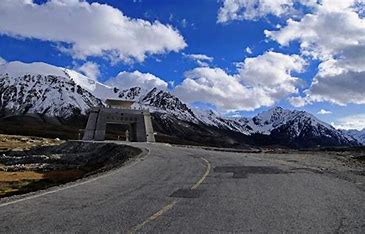Mercury hovered around 40 degrees Celsius in large parts of the country on Monday as the IMD predicted heat wave conditions in parts of east India over the next four days and the northwest region over the next two days.
In the national capital, heatwave conditions persisted for the second consecutive day with some weather stations recording the maximum temperature at least five degrees Celsius above normal.
“Cloudy weather and light rain may provide some relief from the heat in the city on Wednesday,” the IMD said.
According to the India Meteorological Department (IMD), the Gangetic West Bengal and Bihar may see heat wave conditions for four days on the trot. Sikkim, Odisha and Jharkhand may also experience such conditions over the next two to three days.
Similar conditions are expected in isolated pockets over Punjab and Haryana on Monday, and western Uttar Pradesh on Tuesday. Eastern Uttar Pradesh may also be affected on 18-19 April, it said.
Delhi’s primary weather station, the Safdarjung Observatory, registered a maximum temperature of 40.6 degrees Celsius, four notches higher than normal. This is the third consecutive day that the maximum temperature settled above 40 degrees Celsius here.
Hot weather conditions also prevailed in Punjab and Haryana with the maximum temperature settling above the 40-degree mark in most parts of the states.
In Haryana, sizzling heat swept across Hisar as the mercury settled at 41.5 degrees Celsius, according to a report of the meteorological department.
In Punjab, Bathinda recorded a maximum temperature of 41.6 degrees Celsius. Chandigarh, the common capital of the two states, recorded a high of 40 degrees Celsius.
The IMD said a western disturbance active in the western Himalayan region will provide some relief from the soaring temperatures in the plains of northwest India starting Tuesday. Punjab, Haryana, Delhi and Rajasthan are likely to experience isolated to scattered rainfall during 18-20 April, it said. Heavy rainfall is anticipated in isolated areas of Jammu and Kashmir, and Ladakh on April 18.
Himachal Pradesh and Uttarakhand are expected to experience heavy rainfall on 18-19 April.
Isolated hailstorms are likely over Himachal Pradesh, Uttarakhand and Punjab over the next two-three days, the weather department noted.
Earlier this month, the MeT office predicted above-normal maximum temperatures for most parts of the country from April to June, except parts of the northwest and the peninsular regions.
In Rajasthan, Churu was the hottest at 42.2 degrees celsius, while Banswara recorded 42.1 degrees, Karauli 41.4 degrees, Alwar 41.9 degrees, Kota 41.2 degrees and Pilani 41.5 degrees Celsius.
The day temperatures rose by few notches and Una was the hottest in Himachal Pradesh with a high of 41 degrees Celsius, six degrees above normal, even as the meteorological office issued orange warning of heavy rainfall, thunderstorm, lightning and hailstorm over plains, low and mid hills on 18 and 19 April in the state.
The MeT also issued yellow warning of thunderstorm and lightning at isolated places on 20 and 21 April, and predicted wet spell in the region from 18 to 21 April and likelihood of rainfall at isolated places on 22 and 23 April in the hill state.
Down south, northern Andhra Pradesh and its southern coastal regions are expected to experience a heat wave for three days from Monday to Wednesday, the meteorological department said in a statement on Monday.
Warnings are out especially for the districts of Srikakulam, Vizianagaram, Visakhapatnam, Anakapalle, Kakinada, Konaseema, Krishna, NTR, Bapatla, Gunturu and Palnadu.
The remaining districts and Rayalaseema region in the state are expected to experience temperatures in the range of 38 to 42 degrees Celsius during the time.
Meanwhile, the Andhra Pradesh State Disaster Management Authority (APSDMA) has asked people to take necessary precautions in view of the forecast of heat wave in 116 mandals across the state on Monday.
States like West Bengal and Tripura have ordered closure of schools, colleges and universities for a week due to the prevailing heatwave conditions.














